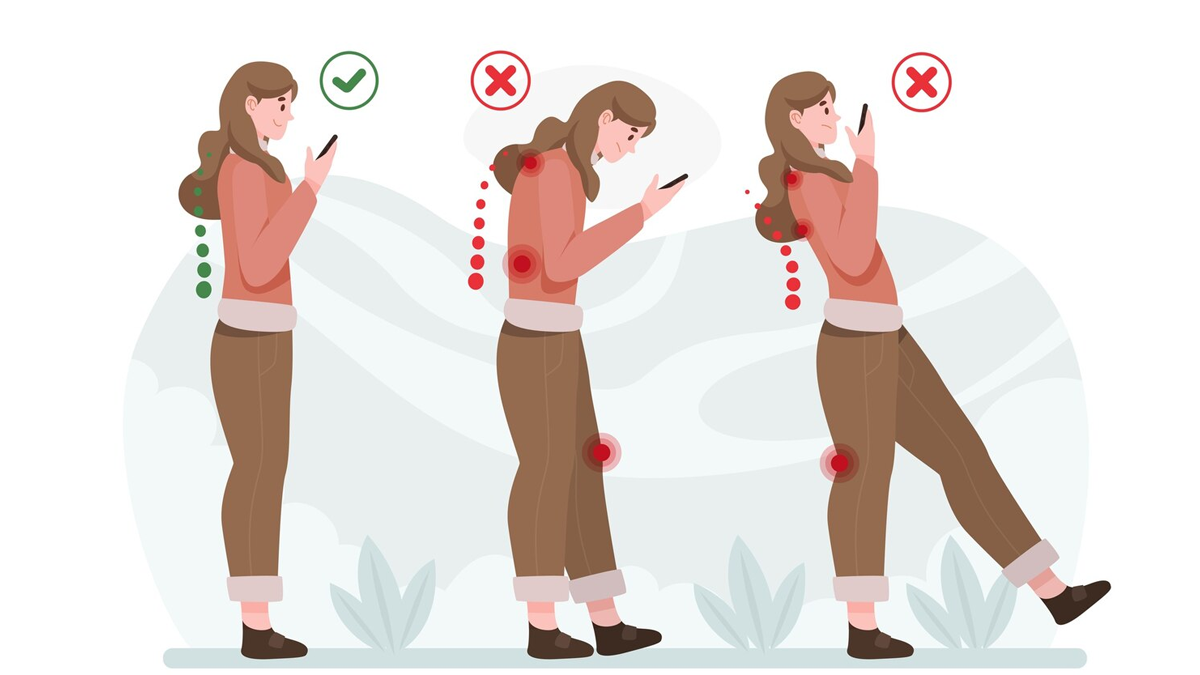
Take a quick look around, whether you're in a cafe, at home, or on the street, you'll likely see someone crouched over a phone, tablet, or laptop. This is the new normal. However, while technology has made life easier, it is also quietly straining our bones, joints, and muscles in ways we are often unaware of.
Table of Content:-
We spoke to Dr Naveen MA, HOD and Senior Consultant - Minimal Access Brain and Spine Surgery, Gleneagles BGS Hospital, Kengeri, Bengaluru, who explained if gadgets are harming our bones.
Terms like 'tech neck' and 'texting thumb' are no longer simply buzzwords; they are actual medical disorders that are affecting an increasing number of people, particularly teenagers and young adults, who visit clinics.
The Posture Issue

Let us start with posture. Every time you lean your head forward to read a message or scroll through social media, you put pressure on your neck, far more than you realise. “The human head weighs approximately 5-6 kg. When it's tilted at a 60-degree angle, the weight feels like 25 kg on your spine. Consider holding that position for hours each day. That's a technical neck,” said Dr Naveen.
It does not stop there. Prolonged screen time can lead to rounded shoulders, forward head posture, and discomfort in the upper back. Laptops on beds, phones used while lying down, and tablets balanced on laps all contribute to poor posture, which gradually erodes spinal health.
Also Read: Do You Have A Text Neck? Here's How To Find Out and How To Reverse It
Small Devices, Major Injuries

Beyond the neck and shoulders, our hands and wrists are also suffering. Constant typing, swiping, and gaming can lead to Repetitive Strain Injuries (RSIs), which are long-term problems caused by repeated motion and poor ergonomics.
Common issues are:
- Overuse of the thumb from texting or gaming can cause pain, oedema, and decreased grip strength.
- Carpal tunnel syndrome is caused by pressure on the median nerve, resulting in tingling, numbness, and pain in the wrist and fingers.
- Tendonitis is an inflammation of the wrist or elbow tendons caused by continuous hand and finger movements.
Most people overlook these symptoms at first, dismissing them as transient. However, if left unaddressed, these minor strains might develop chronic issues.
Future Risk: Early Degeneration
“While these gadget-related issues appear trivial now, they can pave the way for early-onset spondylosis, particularly cervical spondylosis (degeneration of the neck vertebrae). This condition was once generally associated with people in their fifties and sixties. However, it is now common to see individuals in their twenties and thirties experiencing neck stiffness, radiating arm discomfort, and nerve compression,” added Dr Naveen.
A 2020 study in India focused on individuals aged 18-25 years, revealing that 32% of 100 physiotherapy students exhibited symptoms of text neck syndrome. The research found a higher prevalence among females (82%) compared to males (17%).
Children, Teens, and Growing Bones
Children and teenagers are particularly vulnerable. Their bones are still growing, and poor posture during these early years might result in long-term structural abnormalities. Constant gadget use, often for both educational and recreational purposes can weaken back muscles, limit shoulder movement, and develop early spine curvature difficulties.
Also, don't overlook the impact of physical exercise. Every hour spent slouching in front of a computer means less time spent playing outside, gaining muscle strength, or improving balance, all of which are necessary for healthy bone development.
Also Read: Joint Pain At 30? Expert Explains Why Osteopenia Isn’t Just An Old Age Problem Anymore
What can you do? Practical Tips That Work
The good news is that we are not asking you to abandon your devices; simply use them carefully. Here are some small modifications listed by the expert that can make a significant difference:

- Set screen height at eye level to reduce neck strain. Prop up your laptop or monitor and raise your phone.
- Use both hands for typing or texting to prevent overloading one thumb or wrist.
- Take small pauses every 30-40 minutes to stretch your neck, shoulders, and wrists.
- Sit straight. Select chairs that support your lower back. Your feet should be on the floor, and your elbows should be at a 90-degree angle.
- Encourage outdoor activities among youngsters. Even 30 minutes a day of physical activity can help counteract the consequences of sedentary screen time.
- Try easy workouts. Chin tucks, shoulder rolls, wrist stretches, and back extensions are simple to perform at home and do not require any equipment.
Do Not Ignore the Signs
If you've been experiencing persistent neck pain, wrist discomfort, or stiffness, it's time to listen to your body. These are not indications of ageing; rather, they indicate that something is wrong.
Bottomline
Dr Naveen concluded, “Technology is here to stay, as is your body. Taking care of your bones and joints today will result in fewer difficulties tomorrow. If pain or discomfort interferes with your everyday activities, see an orthopaedic expert. A simple check-up can help you figure out what's wrong and how to correct it before it gets worse.”
[Disclaimer: This article contains information provided by an expert and is for informational purposes only. Hence, we advise you to consult your professional if you are dealing with any health issue to avoid complications.]
Also watch this video
How we keep this article up to date:
We work with experts and keep a close eye on the latest in health and wellness. Whenever there is a new research or helpful information, we update our articles with accurate and useful advice.
Current Version